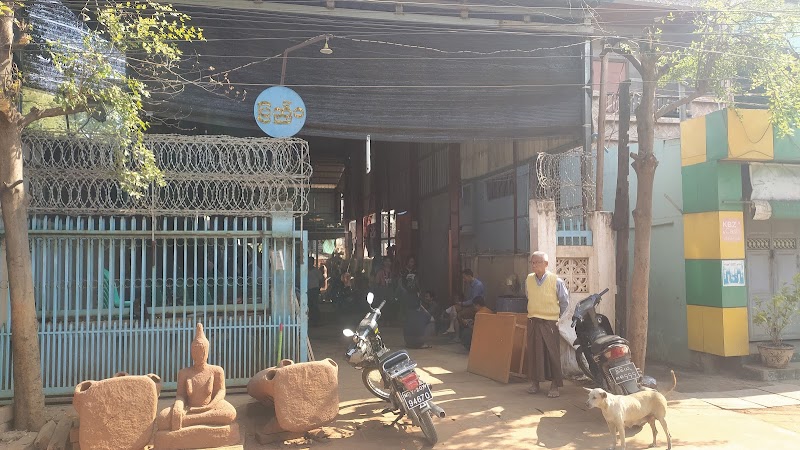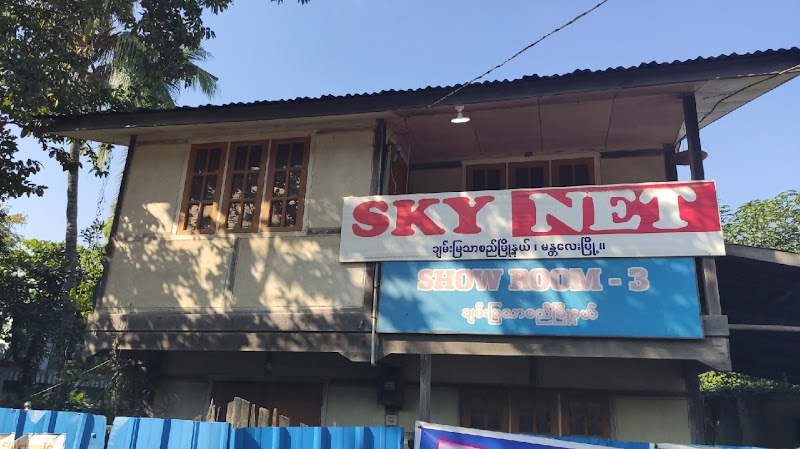Myanmar, formerly known as Burma, boasts a rich cultural and historical heritage, reflected in its museums. Here are the five largest museums in Myanmar:
- National Museum, Yangon:
This museum is the largest and oldest museum in Myanmar, established in 1952. It houses a vast collection of artifacts, including sculptures, paintings, royal regalia, and archaeological findings, spanning various periods of Myanmar’s history and cultural heritage.
- Bogyoke Aung San Museum, Yangon:
Dedicated to the life and legacy of Bogyoke Aung San, the independence hero of Myanmar, this museum showcases his personal belongings, documents, and photographs. It provides insights into Myanmar’s struggle for independence and the role of General Aung San in the country’s history.
- Yangon Heritage Trust Museum, Yangon:
This museum is housed in a colonial-era building and focuses on preserving and promoting Yangon’s architectural and cultural heritage. It exhibits historical documents, photographs, and artifacts related to the city’s development, architecture, and diverse communities.
- Mandalay Palace Museum, Mandalay:
Situated within the grounds of the former Mandalay Palace, this museum displays royal artifacts, historical objects, and cultural treasures from the Konbaung dynasty. Visitors can explore the opulent halls and learn about the history and traditions of the Burmese monarchy.
- Bagan Archaeological Museum, Bagan:
Located in the ancient city of Bagan, this museum houses a collection of artifacts, sculptures, and inscriptions discovered during the archaeological excavations of Bagan’s numerous temples and pagodas. It provides insights into the artistic and cultural achievements of the Bagan Kingdom.

The 7 Biggest Museum near Mandalay
Bronze Statue Museum
- Address: X32H+W85, Mandalay, Myanmar (Burma)
- Map: Click here
- Rating: 4.7 (40)
- Opening hours:
Monday: 6:00 AM – 8:30 PMTuesday: 6:00 AM – 8:30 PMWednesday: 6:00 AM – 8:30 PMThursday: 6:00 AM – 8:30 PMFriday: 6:00 AM – 8:30 PMSaturday: 6:00 AM – 8:30 PMSunday: 6:00 AM – 8:30 PM - Reviews:
5 years agoFamous statue de Buddha 1. MAHAR MYAT MUNI pha.yar gyi (name of buddha statue) 2. Museum of bronze statue came from Cambodia 3. Every 4 a.m a ceremony of cleansing buddha statue’s face (to look like a living man cleaning after getting up)4 years agoIn the ancient history of Arakan, King Anawratha of Pagan (r. 1044–1077) attempted to move the image to Pagan, without success. In 1784, the Burmese under the military leadership of Crown Prince Thado Minsaw of Konbaung dynasty conquered the Kingdom of Mrauk U. The religious relics of the kingdom, including the Mahamuni Buddha image, were confiscated and installed in the Mahamuni temple or Pagoda at Amarapura, on the outskirts of the old capital of Mandalay. As the Mahamuni image was too large to transport as a whole, it was cut into sections and later reassembled and housed in the new temple.Mandalay became the capital under King Mindon (r. 1853–1878). It was also the capital under his son Thibaw (r. 1878–1885) of the Konbaung Dynasty (1752–1885). When the British annexed Upper Burma in 1885 to prevent the French from dominating it, monarchic rule ended. However, veneration of the Mahamuni image has continued, and is visited and idolised by many pilgrims, mainly Rakhine, Mon and Burmans peoples. Khmer bronze at Mahamuni-mythical lion and a statue said to be of Shiva. Right:Khmer bronze at Mahamuni-Triple headed elephant also known as Airavata. Several old bronze statues that line the courtyard of the temple have a long history as war loot. They were originally Khmer statues, found at Angkor Wat in Cambodia, and were taken to Ayutthaya in 1431 by the Siamese. In 1564, the Burmese king Bayinnaung conquered Ayutthaya and took thirty such statues to Bago (Pegu). In 1599, King Razagri of Mrauk U invaded Bago and brought the statues to Mrauk U. Finally, Thado Minsaw took them to Amarapura in 1785. According to local belief, many more of these statues were brought from Arakan. However, King Thibaw melted many of them to cast cannons for fortification of his palace. Of the thirty statues Bayinnaung brought from Siam, only six remain today, and are displayed in the temple complex. They are a major attraction because of their purported healing qualities.5 years agoMahamuni Buddha Temple is one the most famous destination in Myanmar and landmark of Mandalay. The shops sell Buddha statues, images and robes. When arrive the temple at once, feel the peace. East of the temple has fish tank and turtle tank. Can go and feed them.6 years agoAmazing Budda celemony in Mandalay5 years agoOne of the religious place ever in myanmar
Mandalay Cannon Museum
- Address: X3VX+9CP, Mandalay, Myanmar (Burma)
- Map: Click here
- Rating:
Mandalay palace museum
- Address: X3VV+6W3, Unnamed Road, Mandalay, Myanmar (Burma)
- Map: Click here
- Rating: 5 (3)
Peshwar Buddha Relics
- Address: 2443+QH5, Mandalay, Myanmar (Burma)
- Map: Click here
- Rating: 3 (2)
Geological Museum
- Address: X35V+4M2, Mandalay, Myanmar (Burma)
- Map: Click here
- Rating: 4 (1)
Inscription Shed 1
- Address: X3VX+59V, Mandalay, Myanmar (Burma)
- Map: Click here
- Rating:
မန်ကင်းရိပ်သာ
- Address: 236V+WXX, 7th St, Mandalay, Myanmar (Burma)
- Map: Click here
- Rating: 5 (3)

Explore prominent consulting firms in neighboring countries, such as those referenced in Yangon, Naypyidaw and Malacca City, to gain insights into the dynamic business landscape of ASEAN. These firms contribute to the region’s enterprise vibrancy, positioning Mandalay, Myanmar as a hub for strategic insights and innovative solutions.
Top Museum Alternatives in Mandalay
The Biggest Museum in Myanmar (Burma)
While Mandalay is famous for its numerous temples and pagodas, there are also a few alternatives to consider for those looking for a different cultural experience. Here are the top three museum alternatives in Mandalay:
-
U Bein Bridge:
The U Bein Bridge is not a museum in the traditional sense, but it is a must-visit attraction in Mandalay. Built in the 19th century, this teakwood bridge is the oldest and longest wooden bridge in the world, stretching across the Taungthaman Lake. It offers a unique opportunity to learn about the local history and admire breathtaking sunset views. Visitors can take a leisurely walk along the bridge, rent a boat to explore the lake, or simply relax and enjoy the picturesque surroundings.
-
Mandalay Marionettes Theater:
If you’re interested in traditional Burmese performing arts, the Mandalay Marionettes Theater is a fantastic choice. This cultural institution showcases the art of puppetry, which has been a part of Myanmar’s cultural heritage for centuries. Visitors can watch captivating puppet shows that depict traditional tales and stories, accompanied by live traditional music. The theater also offers workshops where you can learn about the intricate art of puppet-making and even try your hand at puppeteering.
-
Atumashi Monastery:
The Atumashi Monastery is not a museum in the traditional sense, but it is an architectural marvel that is worth exploring for its historical and cultural significance. Built in the late 19th century, this grand structure was once one of the most important Buddhist monasteries in Mandalay. Although it was destroyed during the Second World War, the monastery has been partially restored and now serves as a place of worship and meditation. Visitors can marvel at its intricate wood carvings, exquisite architecture, and serene atmosphere.
Thank you for taking the time to read our article. For more in-depth reviews and comprehensive ratings on the Museum spots, please explore the recommended articles listed below.
- Discover the Biggest Water Park in Mandalay
Myanmar is home to several impressive water parks, each offering a unique blend of thrilling rides, leisurely attractions, and family-friendly..
- The 7 Biggest Water Park in Yangon
Myanmar (Burma) boasts several impressive water parks that offer thrilling entertainment and refreshing escapes. Here are the top 5 largest..
- The 4 Biggest Water Park in Naypyidaw
Water parks have become increasingly popular in Myanmar, offering respite from the tropical heat and providing entertainment for people of..
- The 7 Biggest Phone Store in Mandalay
Myanmar (Burma) has witnessed a surge in mobile phone usage in recent years, leading to the emergence of several prominent..

